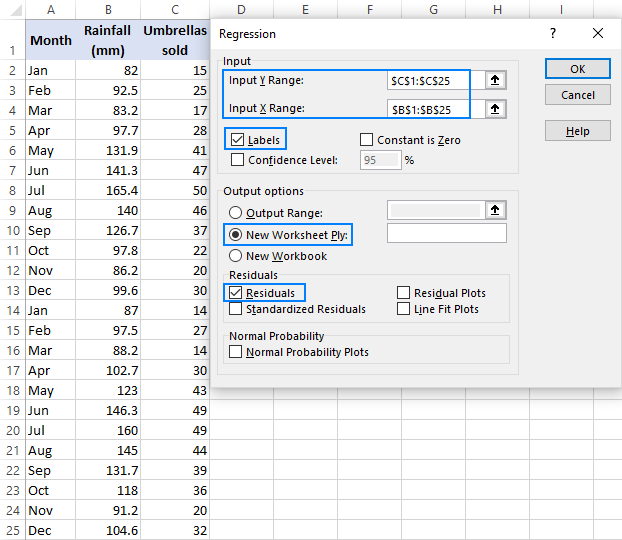
Robust standard errors require the user to have the sandwich package installed. One of the problems that originally motivated the creation of this function was the desire to efficiently report robust standard errors - while it is easy enough for an experienced R user to calculate robust standard errors, there are not many simple ways to include the results in a regression table as is common with the likes of Stata, SPSS, etc. You can force knitr to give the console style of output by setting the chunk option render = 'normal_print'. Note: The output in this vignette will mimic how it looks in the R console, but if you are generating your own RMarkdown documents and have kableExtra installed, you’ll instead get some prettier looking tables like this: summ(fit)

Model types supported are lm, glm, svyglm, merMod, and rq, though not all will be reviewed in detail here.
#EXCEL LINEAR REGRESSION FOR PLOT PLUS#
Robust standard errors (for lm and glm plus quantreg’s built-in options for rq models).Summaries for lm, glm, svyglm ( survey), merMod ( lme4), and rq ( quantreg) models.

Here’s a quick (not comprehensive) list of functionality supported by summ: That, of course, was the motivation behind the creation of the function I didn’t like the choices made by R’s core team with summary!

Like any output, this one is somewhat opinionated - some information is shown that perhaps not everyone would be interested in, some may be missing. With no user-specified arguments except a fitted model, the output of summ looks like this: # Fit modelįit <- lm(Income ~ Frost + Illiteracy + Murder, data = states) After creating output tables “by hand” on multiple occasions, I thought it best to pack things into a reusable function: It became summ. Things were even worse if I wanted to give them information that is not included in the summary like robust standard errors, scaled coefficients, and VIFs since the functions for estimating these don’t append them to a typical regression table. When sharing analyses with colleagues unfamiliar with R, I found that the output generally was not clear to them.


 0 kommentar(er)
0 kommentar(er)
